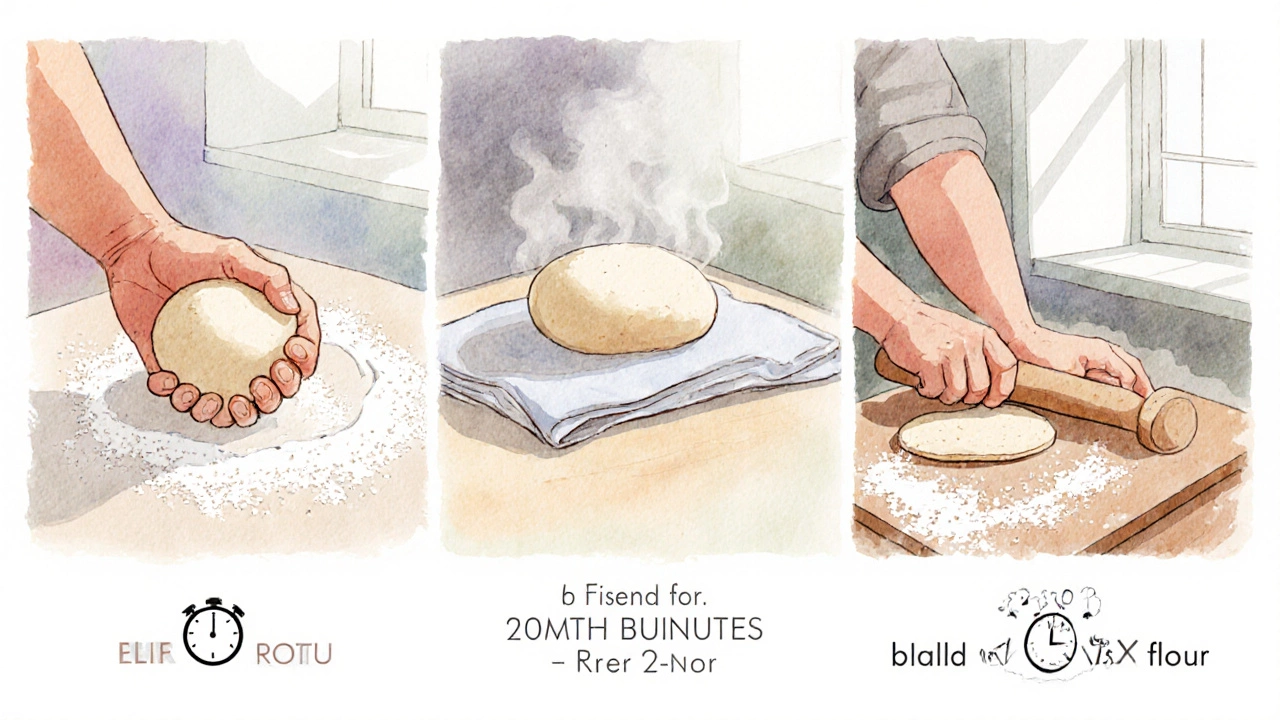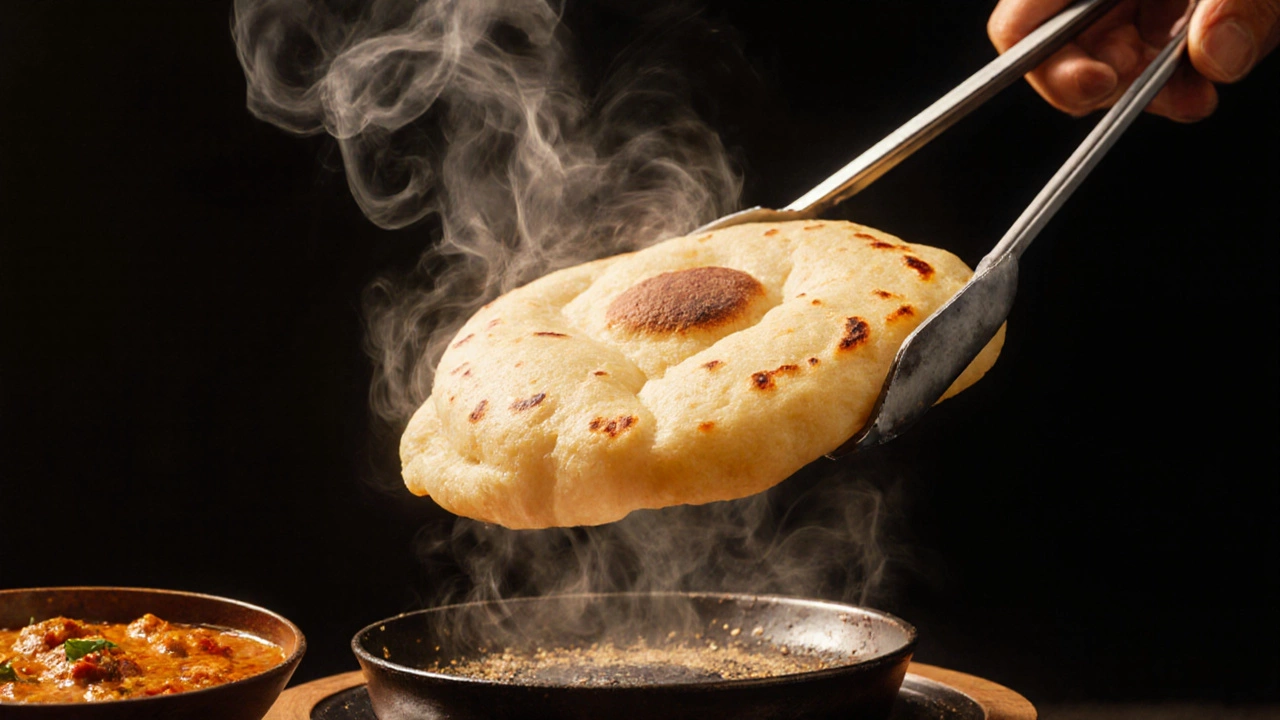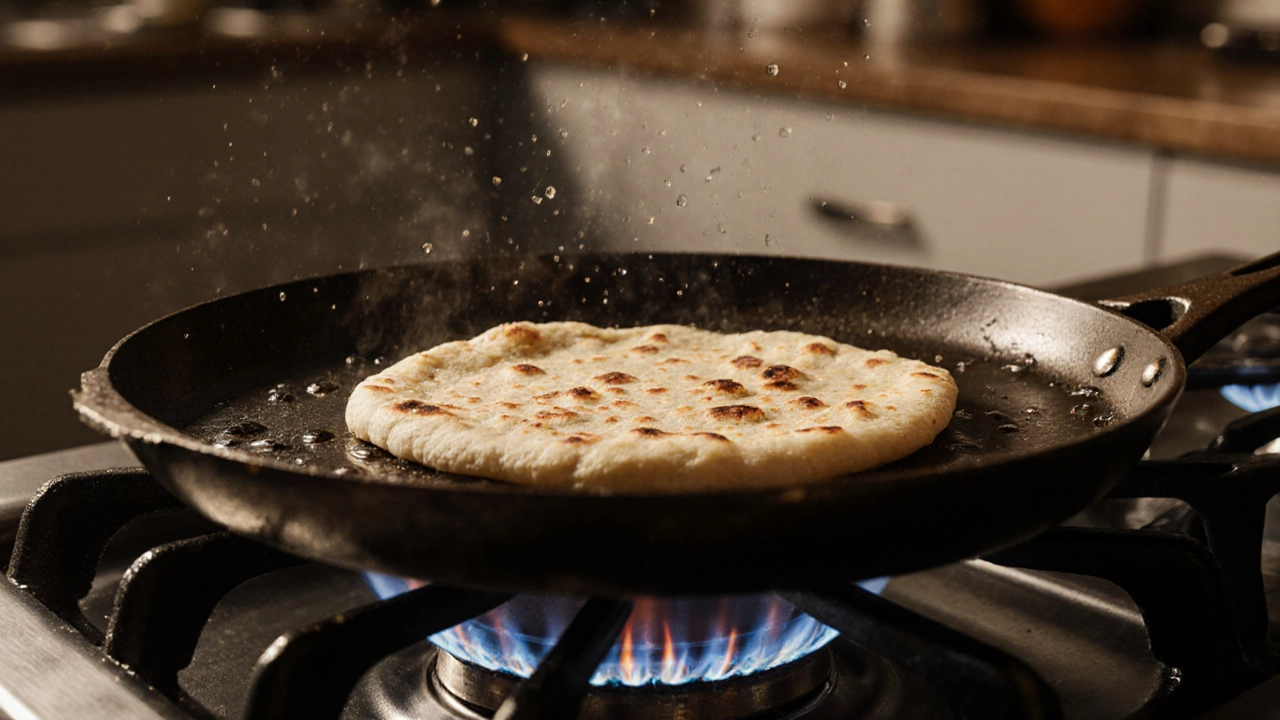Roti Puffing Troubleshooter
Troubleshooting Results
Select your issues and click "Analyze My Roti Problems" to get specific solutions.
Ever opened the tawa to find a flat, dense roti that refuses to puff like a balloon? You’re not alone - a stubborn roti can turn a simple meal into a headache. Below you’ll learn the exact reasons why roti stays flat and, more importantly, how to fix each issue so every round comes out light, airy, and ready to roll.
Key Takeaways
- Use fresh Atta flour (whole‑wheat flour) that still has its natural gluten - old flour loses elasticity.
- Keep dough at the right hydration (about 55‑60% water) and let it rest for at least 20‑30 minutes.
- Pre‑heat the Tawaa heavy iron or cast‑iron griddle used for cooking Indian breads until a few drops of water sizzle and evaporate.
- Roll the dough evenly to a thickness of 2‑3mm; too thick blocks steam, too thin tears the surface.
- Cook on medium‑high heat, flip quickly, and don’t press the roti with a cloth - let it puff naturally.
What Is Roti and Why Does Puffing Matter?
Roti is a soft Indian flatbread made from whole‑wheat flour, water, and a pinch of salt. When cooked correctly, steam forms inside the dough, expanding the layers and creating a puffed‑up balloon‑like shape. That puff not only looks appealing, it also means the roti is airy, easy to tear, and perfect for scooping up curries.
If the roti stays flat, it’s usually a sign that steam couldn’t build up. Steam needs three things: a dough that can trap it (good gluten), a surface hot enough to generate it fast, and a brief cooking window that lets the steam expand before the outer skin hardens.
Common Mistakes That Stop Roti from Puffing
- Wrong flour quality. Low‑protein flour or flour that’s been sitting for months won’t develop enough gluten.
- Incorrect dough hydration. Too little water makes the dough stiff; too much makes it sticky and hard to roll.
- Skipping the rest period. Resting relaxes gluten and lets the flour fully absorb water.
- Cold or uneven tawa. If the pan isn’t hot enough, the roti cooks slowly and steam leaks out.
- Over‑rolling or under‑rolling. A thick disc traps less steam; a thin one tears easily.
- Pressing with a cloth. Many cooks press the roti to encourage puffing, but that actually squeezes the steam out.
- Using oil or ghee in the dough. A little can add flavor, but too much coats the gluten and prevents puff.

Step‑by‑Step Method for Perfect Puff
- Measure your ingredients. For 8‑10 rotis, combine 2cups of fresh Atta flour, ½cup water, ¼tsp salt, and, if you like, 1tsp oil.
- Knead the dough. Mix until a smooth ball forms. It should feel soft but not sticky. If it feels dry, add water a teaspoon at a time.
- Rest the dough. Cover with a damp cloth and let it sit for 20‑30minutes. This step is crucial - it lets the gluten relax and the flour hydrate fully.
- Pre‑heat the tawa. Place the tawa on medium‑high heat for about 5minutes. Test: sprinkle a few drops of water; they should dance and evaporate instantly.
- Divide and roll. Pinch off a golf‑ball‑size piece, flatten it, and dust lightly with flour. Using a rolling pin, roll to a 2‑3mm circle. Try to keep the size uniform - about 6‑7inches in diameter.
- First side cooking. Lay the roti on the hot tawa. Cook for 15‑20seconds until you see tiny bubbles forming.
- Flip and puff. Turn quickly. Within a few seconds, the roti should start to balloon. If it doesn’t, gently shake the tawa; steam will push the surface up.
- Final flip (optional). Some cooks give a quick second flip to ensure both sides are lightly browned. Do this only if the roti has already puffed.
- Serve immediately. Roti is best eaten hot, straight off the tawa, while the steam inside is still trapped.
Quick Checklist Before You Start
- Fresh, high‑protein whole‑wheat Atta flour (protein≈12‑14%).
- Water temperature: lukewarm (around 30‑35°C) for easy mixing.
- Salt measured accurately - about ¼tsp per 2cups flour.
- Dry tawa, properly pre‑heated.
- Rolling pin and surface dusted lightly with flour.
- Timer or watch to avoid over‑cooking.
Understanding the Science: How Steam Makes Roti Puff
When the dough hits the hot tawa, the water in the dough instantly turns to steam. Because the dough’s gluten network is elastic, it stretches and encloses the steam, forming a pocket. If the outer layer cooks too slowly, the steam leaks out; if it cooks too fast, the surface hardens before the steam can expand. The sweet spot is a crust that’s golden‑brown but still flexible - just enough to hold the pressure.

Comparing Roti Variants
| Variant | Typical Flour | Typical Thickness | Puffing Method | Common Use |
|---|---|---|---|---|
| Roti | Atta (whole‑wheat) | 2‑3mm | Direct tawa, flip quickly | Everyday meals |
| Chapati | Atta, sometimes mixed with white flour | 2‑3mm | Same as roti, often softer | North Indian cuisine |
| Phulka | Atta | 2‑3mm, slightly larger | Cooked on tawa then directly over open flame to puff fully | Special occasions, restaurants |
Troubleshooting Different Scenarios
- Roti stays flat even after following the steps. Try increasing the tawa temperature slightly; a hotter surface creates steam faster.
- Roti cracks when you try to puff it. The dough is likely too dry - add a teaspoon of water and knead gently.
- Roti puffs but becomes hard quickly. Reduce cooking time on each side; over‑cooking dries it out.
- Roti sticks to the tawa. Ensure the tawa is seasoned (a thin layer of oil baked in) and that you’re not using too much flour while rolling.
Frequently Asked Questions
Can I use all‑purpose flour instead of atta?
All‑purpose flour has less protein, so the gluten network is weaker. You’ll end up with a denser roti that rarely puffs. If you must use it, add a tablespoon of wheat gluten per cup of flour to boost elasticity.
Do I need oil in the dough?
A small amount (about 1tsp per 2cups flour) adds flavor and makes the roti softer, but too much coats the gluten and stops puffing. It’s optional - many traditional recipes use none.
Why does my tawa sometimes feel too hot, burning the roti?
If the tawa is scorching, steam can’t form fast enough, and the outer layer chars before puffing. Reduce the flame to medium‑high and give the tawa a few seconds to stabilize after heating.
Is it okay to cover the roti with a lid to force puffing?
Covering can trap steam, but it also makes the surface soggy and prevents the characteristic brown spots. The best method is a quick flip; the steam will do the work on its own.
How long can I store roti dough before using it?
You can keep the dough covered in the fridge for up to 24hours. Let it come to room temperature before rolling - this prevents stiffness and helps puffing.
